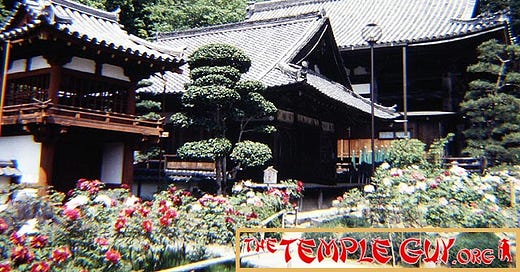Local practice does not always bow to officialdom. The main Catholic church in my city is called Holy Rosary Parish. But when you get into a tricycle (a motorcycle with a covered sidecar, a common form of public transportation here), if you say,"Take me to Holy Rosary Parish," you probably won't get much more than a confused look. But "Take me to the Big Church" will get you there every time.
Such is the case with the temple in Asuka officially named Ryugai-ji, the Dragon-Covering Temple. Just say Oka-dera--"the Temple on the Hill"--and you're golden!
So yeah: Let's go to the Temple on the Hill in this episode of--
TEMPLE TALES!
"Thar Be Dragons"
Marauding dragons are a common enough feature in European folklore. They destroy crops, horde gold, and kidnap maidens. That's a lot of damage for a mythical beast!
The pond lies just behind the pillars in the foreground (left); Gien wrestles with the dragon--though the scripture says he conquered it by prayer (photo of plaque from Wikipedia)
What's even more interesting is that East Asia is not safe from these figments, either. Case in point: a neighborhood in Asuka, one of Japan's ancient capitals, which we visited in Episode 067. It seems that a dragon would buzz people as they attempted to raise their crops. Some died quickly, from his attacks; others died slowly from starvation, as they were too afraid to work the fields.





